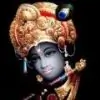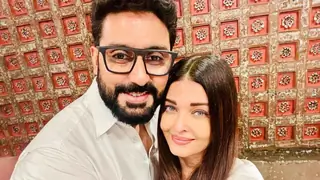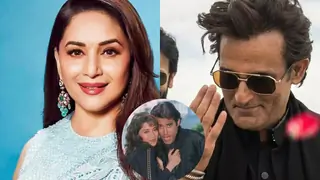India being a land of diversity celebrates the auspicious occasion of HOLI in different ways in different plaes !
Here's a succinct description😊
😊Holi in Andhra Pradesh😊
Though the celebrations of Holi in South India are not as grand as compared to that in North India. Yet, what is particularly noticeable in Andhra Pradesh as in other Dravidian states is the heightened feeling of communal harmony. Here too, people participate in merry making. Besides, in the evening, youngsters play with dry colours and seek elders' blessings by putting gulal and abeer on the feet of the elders.
The Banjara tribes of Andhra Pradesh celebrate Holi in their own way. Graceful dances are performed by the colourful Banjara gypsies.
😊Holi in Bengal😊
There is a particular elan in the way Holi is celebrated in the state of West Bengal. Panache is added by the presence of the rich Bengal culture and the existence of Shantiniketan.
Basant Utsav
The high point of this state is the celebration of 'Basant Utsav'. The tradition was reintroduced by poet and Nobel laureate Rabindranath Tagore at Shantiniketan, the University he founded. 'Basant Utsav' means 'Spring Festival', here boys and girls joyfully welcome Spring, the season of Hope not just with colours but with songs, dance, chanting of hymns in the serene ambiance of Shantiniketan.
Dol Purnima
On the Dol Purnima day in the early morning, the students dress up in saffron-coloured clothes and wear garlands of fragrant flowers. They sing and dance to the accompaniment of musical instruments presenting an enchanting view to the onlookers and a memory to cherish for years.
In Bengal, Holi is known by the name of 'Dol Jatra', 'Dol Purnima' or the 'Swing Festival'. The festival is celebrated in a dignified manner by placing the idols of Krishna and Radha on a picturesquely decorated palanquin which is then taken round the main streets of the city. The devotees take turns to swing them while women dance around the swing and sing devotional songs. All this while men keep spraying coloured water and colour powder, 'abeer' at them.
The head of the family, observes fast and prays to Lord Krishna and Agnidev. After all the traditional rituals are over, he smears Krishna's idol with gulal and offers "bhog" to both Krishna and Agnidev.
Young people in the tribes have their own reason to look forward to the festival as they are allowed to form liaisons leading into marriages on Holi. No wonder they depict high level of enthusiasm when it comes to Holi.
Smart enough, men come fully padded as they are fully aware what kind of welcome awaits them and also the fact that they are not allowed to retaliate on that day.
In this mock battle of sorts, they try their best not to be captured. The unlucky one's however, are forcefully led away and get a good thrashing from the women. Further, they are made to wear a female attire and dance in public. All in the spirit of Holi.
Renowned poets like Surdas, Nand-das, Kumbhan-das and others have picturesquely described how Lord Krishna received similar treatment and was forced to don a sari and wear make-up and perform dance before being released by the gopies.
The next day, it is the turn of men of Barsana. They reciprocate by invading Nandgaon and drench the womenfolk of Nandgaon in colours of kesudo, naturally occurring orange-red dye and palash. Today, the women of Nadagow beat the invaders from Barsana. It is a colourful site.
However, in the interest of tourism and safety, the state tourist board has set up excellent vantage points for the public. A large open ground, on the outskirts of the town is specially set aside for the most magnificent display of the festivities.
The week long Holi celebrations also continue in the various Krishna temples on different days. The celebrations are filled with clouds of colours and of course, much fun.
At the time of Holika people assemble near the fire. The eldest member or a purohit initiates the lighting. He then smears others with colour as a mark of greeting. Next day the festival is celebrated with colours and lot of frolic.
Children and the youth take extreme delight in the festival. Though the festival is usually played with colours at some places people also enjoy playing holi with mud. Folk songs are sung at high pitch and people dance to the tune of dholak and the spirit of Holi.
Intoxicating bhang is consumed with a variety of mouth watering delicacies such as pakoras and thandai to enhance the mood of the festival.
Being a metro city, an amalgamation of cultures and traditions can be witnessed here. Virtually all aspects of Holi as seen in various states are noticeable in the numerous pockets of Delhi.
People move out in tolis and apply colour on each other till they become unrecognizable. Play with colors peaks up in the residential colonies as people usually do not go out with families beyond their neighborhood. Even public conveyances do no ply with usual frequency.
Feasts, music, dancing and blasting parties are held all over the city to mark the festival of colours. People hug and greet each other by applying abeer as tilak. Any feeling of hardship or animosity is forgotten on the day. Is is said that even the enemies become friend on Holi.
On the eve of Holi, bonfires or Holika are lit in the important centres of the city where people celebrate the victory of good over evil. Wood for burning Holika is collected weeks before the festival.
Being a political hub of the country, Delhi sees huge enthusiasm even among the politicians. Holi is also celebrated at the Presidents and Prime Minister residences where people gather to play Holi. Cultural events and lots of fun mark the day.
The Panaji Shigmotsav Samiti also organizes a parade in Panaji. Besides, numerous temple around Goa also make special arrangements for Holi celebrations. Of interest is the celebrations at Panaji, Mapusa, Vasco Da Gama and Margao.
Crowning of Holi King
The state is famous for the tradition of breaking earthen pot full of buttermilk and tied high on a rope. Hundreds of people participate in forming a human pyramid, in order to reach the pot. At places, there are also prizes for the group which successfully breaks the pot. The person who actually breaks the pot is crowned the 'Holi King' of the locality for the year. Participation of the onlookers is no less. They keep throwing buckets of water on the boys forming the pyramid.
Lighting of bonfire
On the eve of Holi, a bonfire decorated with flowers and fruits is lit with a fire brought from the temple of Mata. People offer raw mangoes, coconut, corn, toys made of sugar, khoya to the 'Holika' and apply tilak on each other and hug their dear ones. Virgins from Gujarat create images of their goddess 'Gauri' out of the ashes left by the bonfire of the night before.
Of course, the next day, called Dhuleti, is reserved for the play of colours.
There is no end to fun and frolic here too. People apply colours on each other and greet each other. Any hard feeling of animosity is forgotten on the day and a general feeling harmony and happiness prevail.
Bhabhi, the brothers wife, gets an upper hand on the day of Holi in Haryana. Devars need to watchout. The bhabhi's here, get a social sanction on Holi to beat their devars and make them pay the price of all the pranks they played on them for the entire year. Bhabhi's roll up their saris in the form of a rope in a mock rage, and give a good run to their devars- all in the spirit of Holi, i.e. fun. In the evening, devars are supposed to bring sweets for their dear bhabhi.
Break the pot
As in several other states the tradition of breaking the pot is celebrated with gusto in Haryana. A human pyramid is formed to break the pot of buttermilk hung high up in the street much like Lord Krishna did as a child. It is a pleasure to watch the ritual as womenfolk pour buckets of colour water at men trying to break the pot.
People in this state are all charged up when it comes to play with colours. Pichkaris in various creative and innovative designs are specially bought by children to colour anybody who comes in sight and even more to the one who tries to escape...all in good fun.
The interesting fact to mark about Holi in Himachal Pradesh is that thousands gather at the holy shrine of Ponta Sahib in Sirmour district on the banks of Yamuna. The shrine is highly regarded and people have great faith in it. No wonder, they choose the auspicious day of Holi to seek divine blessings.
Kullu Holi is marked by mixing snow with colours- making it an 'Ice-Holi'. While, the main celebrations are held at the world famous Slang Pass, which witnesses heaviest snowfall in the country.
Holi is called Shimga or Rangpanchami!
People of Maharashtra commonly know this festival of colours by the name of Shimga or Rangpanchami. For, the play of colours is reserved for the fifth day here.
The festival is particularly popular amongst the fisher folk. They celebrate it in on a large scale and revel in the festivities by singing, dancing and merry-making. This special dance provide them means to release all their repressed feelings, needs and desires. People also utter sound through their mouths in a peculiar fashion by striking their mouths with the back of their hands.
Holi differs from North India in Maharashtra
People of Maharashtra celebrate Holi like the North Indians. Play with colours is reserved for Rangpanchami, which comes five days after Phalgun Poornima. On this day, they make bonfire and effigy of Ogress Holika is burnt symbolizing the victory of good over evil.
The state also gets its unique Holi flavour with the delicacies such as Puran Poli. Besides people drink sugarcane juice and feed children with watermelons that are in season.
Tolis to break the pot
Great excitement is visible in the youth of Maharashtra when it comes to Holi revelry particularly when it comes to breaking the pot. Trained groups also called tolis form huge pyramids to break the pot of butter-milk hung high on the street. Adding to the enthusiasm is the steady flow of colour water on the men by the womenfolk.
The tradition finds its roots in the legend that the Lord Krishna as a child was extremely fond of butter milk and used to steal it from an accessible house in his village.
Historic significance of Holi in Maharashtra
During the Maratha regime this festival was celebrated with great pomp and grandeur. It was on a Holi festival day that five-year-old Jijabhai, daughter of Lakhooji Jadhav innocently splashed coloured water and threw gulal on young Shahaji, son of Malajirao Bhowale. Taking it as an auspicious event, the two children's engagement was announced that very day. Soon they were married. Later, Jijabhai gave birth to Shivaji, the founder of great Maratha empire.
Besides, there is also a tradition of preparing a thatched hut of hay, twigs and sticks and then set ablaze. The next day boys make groups and play Holi with girls. Girls, in Manipur, are smart and extract money from the boys for playing colous with them.
Holi in Temples
Devotees, dress themselves in the traditional white and yellow turbans and sing devotional songs in the Krishna temples. They also play gulal with each other in front of the temple completely submerging themselves in the mirth associated with the festival.
The Last Day
On the last day of the festival, devotees take out procession towards the main Krishna temple, 3 km west of the state capital, Imphal. Here too, devotees perform cultural activities and celebrate.
Thabal Chongba
A special Manipuri dance, called 'Thabal Chongba' is also associated with this festival. Thabal, means moonlight and Chongba means dance. Though earlier only drum or dholak, was allowed to be used for this special dance, now modern musical instruments are also used. This dance is performed on all six-days in every locality and gives a chance to the young boys and girls to meet.
Celebrations Continue for a Week
With an immensely strong bonding with Lord Krishna, people of Mathura and Vrindavan celebrate Holi for over a week. Each major Krishna temple celebrates Holi on a different day.
Of immense interest for the tourist is the celebrations which take place at the famous Bakai-Bihari Temple at Vrindavan. Drenched in the colours of Holi people can be found totally immersed in the spirit of devotion here.
Another interesting place for Holi celebrations is Gulal-Kund in Braj; a beautiful little lake near Govardhan mountain. Here, the festival is commemorated on a more regular basis. Pilgrims can see the re-enactments of Holi throughout the year at this lake. Local boys, acting in the Krishna-Lila drama troupes re-enact the scenes of Holi for the pilgrims.
So much is the passion of the people here, that they throng these temples every day and get drenched in coloured water...all in the name of the Lord they love so much.
The Legend
The tradition of playing colours on Holi draws its roots from a legend of Radha and Krishna. It is said that young Krishna was jealous of Radha's fair complexion since he himself was very dark. He narrated his woe to mother Yashoda, who teasingly asked him to colour Radha's face in which ever colour he wanted. In a mischievous mood, Krishna applied colour on Radha's face. The tradition of applying colour on one's beloved is being religiously followed till date.
The palanquin - with the idol of Lord Jagannath on it is taken out in a procession around the main streets of the city. Devotees take turn to swing it while women dance around it and sing devotional songs. All this while men keep spraying coloured water and colour powder, 'abeer' at them.
Celebrations by milkmen
In the evening, milkmen, 'gwalas' carry the palanquin on their shoulders, for Krishna belonged to their clan. Games such as Dandi Khela are also played to mark the occasion. A special tent called 'jhoolan mandap' is erected to place the idol of Lord Jagannath at night. The following morning abeer is applied of the idol of the lord. Thereafter, people relish the special delicacies of the occasion such as pethas, laddoos made of puffed rice and sesame seed and play with colours. Towards evening, idols are given a dip in a pond and taken back to temple.
Here too, Holika is burnt in the evening as a symbol pf victory of good over evil. Later, married women carefully sweep away the ashes of the bonfire, to mark the spot with drawings made out of a paste of powdered sun dried rice and water.
Hola Mohalla
Holla Mohalla is celebrated a day after Holi in Punjab especially by the Nihang Sikhs.
The festival is celebrated with gusto at Anandpur Sahib for it was here that Guru Gobind Singh, the tenth and last guru, instituted the pahul (baptism of the Khalsas), elected the panj pyare (the beloved five), and militarized his followers into the order of Nihangs (warrior-mendicants).
This festival of the Nihangs held at their headquarters Anandpur Sahib began as a counterpart to Holi. Though it almost did away with the throwing of colors, nonetheless, it is more colorful.
Martial arts like archery, sword fencing, fancy horse-riding, tent-pegging, and the deft handling of other contraptions of offence and defense are displayed by the Nihangs. Spectacular and thrilling acts of dare-devilry dexterously executed are performed.
The festivities close with a ceremonial procession taken through the township starting from Takth Keshgarh Sahib. Dressed in a long tunic of bright deep blue, an elaborate turban, sometimes of enormous size, at times banded with strips of bright yellow, armed with weapons of one's liking - bows and arrows, spears, swords and shield, muskets, guns or what have you - the Nihang displays his skills at this festival of valor, a pageant of the past.
The langar (community feast) is open through the day and lasts as long as there are any takers.
Celebrations by Royals:
On this day even the royals of Rajasthan don a festive spirit and mingle with the commoners. Infact, royal courts all over North India have refined the festival into an art. Rajput warriors of the Rajasthani courts used to show off their equestrian skills during the festival. Even today, Rajput men would ride their steeds through the white and pink clouds of colour, throwing colour powders on each other. Even the members of the royal families are not immune from being drenched by colour.
Braj Mahotsav:
The Braj Festival is held in honour of Lord Krishna a few days before Holi, in the month of March. The festival is marked by verve and zest. Villagers, in gay, multi hued attire, can be seen singing and performing the raslila depicting the immortal love-story of Radha and Krishna.
Folk Traditions in Rajasthan
Mali Holi : The colourful festival of Holi is played in many different ways. The 'mali' or gardener community of Rajasthan has a unique style where the men colour the women with water and women retaliate by hitting them with sticks or long pieces of cloth
.
Gair at Godaji: Men from 12 villages collect at Godaji village near Ajmer in Rajasthan to play gair a few days after holi. Each village brings his own drummer and gair troupes. The picturesque location for it is a valley surrounded by hills on all sides. Thousands of onlookers and close to hundred players make a wonderful sight and a fond memory.
Dolchi Holi at Bikaner: In Bikaner district, members of 'Harsh' and 'Vyas' communities have been celebrating Holi by throwing water at one another with force for the past more than 300 years. A specially designed vessel called 'dolchi' made from camel skin is used for the purpose. But the water is thrown only at the back of an individual.
The Legend of Kaamadeva:
The story prevalent in South India is that of Kamadeva-the Love God (the Hindu equivalent of Cupid), who moves through the woods in the season of Spring, aiming his passion tipped arrows that pierce the heart at all who cross his path, from his bow made of sweet sugarcane strung with humming bees.
Legend has it that shortly after Shiva's consort sati committed suicide due to the disgrace shown by her father, Daksha to Lord Shiva, Shiva became sad and started to meditate. Meanwhile, the daughter of the mountains, Parvati, started meditating to acquire Lord Shiva as the husband. Since Lord Shiva was least interested in the world, all the God became concerned and afraid. They approached Kaama and asked him to shoot his arrow on Lord Shiva so that he gets back to his original self and marry Parvati. So, Kaama went and shot his arrow but Lord Shiva was angered and opened his third eye and burnt Kaama to ashes. Shiva then looked towards Paarvati and fructified her penance by marrying her.
The grief stricken Rati, Kamdev's wife, then beseeches Lord Shiva for mercy. Shiva relents and partly restores Kamadeva to Rati. Though she can see him, he remains without physical form 'anang'. The songs sung here are the stories of Rati's lamentations. Another interpretation is that Parvati (Siva's consort) brings Kamadeva back to life and the day he breathed again is celebrated as Holi. Thus, Holi is also considered as a festival that celebrates love.
Not to be missed are the mouthwatering delicacies the state has for the festival. Gujiaya, mathri, dahi badas are a must besides many others festival goodies.
Holika Dahan:
The major ritual of Holi in this state, is the lighting of bonfires, better known as Holika on Chhoti Holi on a day prior to the main Holi. The tradition signifies the victory of good over evil and finds its root in the various legends associated with the festival. Mainly, the story of demon king Hiranyakashyap. The King planned the death of his son, Prahlad an ardent devotee of Lord Naraayana with the help of his sister Holika. Prahlad was saved by the grace of God while Holika was consumed by fire.
Bhang:
Description of Holi is incomplete without the mention of Bhang (cannabis).Holi has become synonymous with it for many. The tradition of eating bhang -- an intoxicating substance is rampant in northern India. It is usually consumed in the form of laddoo or as thandai. Consumption of bhang adds greatly to the revelry as people get high on it.
The land of Shiva, Banaras (or Varanasi as it is now known), is specially famous for its high level of bhang consumption. Sitting on the 'ghats' or steps leading to the Ganga river, people drenched in colours can be seen grinding bhang and mixing it with milk and various dry fruits to enhance the taste.
Celebration of Barley Harvest:
The festival is also the celebration of barley harvest. On Chhoti Holi, people come together to light the fire. They bury a pot of new barley seeds under the pyre for roasting. These seeds are eaten after the fire is extinguished. Divinations for the coming harvest are cast by interpreting the direction of the flames or by the state of the seeds in the buried pot. People sometimes take embers from the fire to their homes to rekindle their own domestic fires. The ashes from the Holi fire are also believed to provide protection against diseases.























